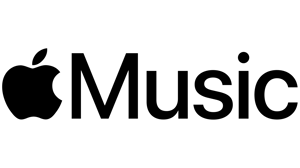According to the RIAA’s annual year-end report, streaming platforms were the music industry's biggest source of revenue in 2021, far surpassing physical sales and digital downloads at $12.4 billion — a whopping 83% of the entire U.S. market. That translates to a 24% increase from the previous year.
The largest share of this segment was paid subscriptions. They jumped 23% and hit $9.5 billion, proving that more and more consumers are willing to pay for premium versions of their favorite streaming platform(s).
While the music industry has seen a noticeable surge in streaming numbers over the past decade, it’s still not a surefire path to profitability for even the most experienced songwriters. That could change as the industry evolves and there is more support for equal payouts. For now, the best thing you can do is survey the strengths and weaknesses of all the digital options that are out there.
The following guide includes a rough estimate of what each streaming platform was paying songwriters as of February 23, 2022, according to the artist-run online resource Producer Hive. For a point of comparison that was published around the same time and includes such additional services as Napster, check out this RouteNote roundup.
This story also delves into the market share divide, as detailed in a MIDiA report that was published at the end of 2021, along with a breakdown of launch dates, subscribers (according to a Business of Apps report from early 2022), and where all these warring tech companies are actually based. Each of the services lumped in with MIDiA’s “Other” metric accounted for less than 2% of the 523.9 million global subscribers it studied, a number that’s rather negligible compared to their competitors.
As you weigh your options for earning mechanical and performance royalties, please keep in mind that these stats aren’t set in stone; they’re constantly changing and may differ from site to site due to the research methods and reasoning of each industry report. Rather than treating this competitive analysis as your only source of reputable information, consider it a starting point for being a better informed small business of one. In the end, the Songtrust team doesn’t want to just educate you; we want to empower you to own your music and your career.
Napster/Rhapsody

The Backstory: While the world’s most notorious file-sharing service may have shut down in 2002 after a seemingly endless series of lawsuits, its relaunch as a legit operation changed hands several times — from Roxio to Best Buy — before Rhapsody acquired it in 2011. Since the two services were essentially owned by the same company and were competitors, Rhapsody changed its name to Napster in 2016 and absorbed its resources to become the international brand it is today. But that’s not the end of its story. The London-based live music company MelodyVR acquired Napster for $70 million in 2020, calling its cash-and-share deal a “reverse takeover” according to Techcrunch.
Subscribers: 3 million, according to a 2020 Rolling Stone interview with MelodyVR
Market share: Less than 2%
Payout: $0.019 per interactive stream
Headquarters: Seattle, WA
TIDAL

The Backstory: The Swedish tech company Aspiro founded TIDAL in 2014, about eight years after Spotify’s launch in Stockholm. Aspiro’s ownership was short-lived, however; Jay-Z’s holding company, Project Panther Bidco Ltd., took it over a year later and rebranded TIDAL as the music industry’s first “artist-owned streaming service.” TIME magazine was not impressed by a notorious press conference that somehow got Nicki Minaj, Usher, Madonna, Rihanna, Beyoncé, Kanye West, Daft Punk, Alicia Keys, and Jack White — all minority owners, apparently — in the same room.
It’s been an uphill battle for the brand ever since, with Sprint Corporation snagging 33% of TIDAL in 2017, and Block, Inc. (Square’s parent company) buying the whole shebang in 2021. What they will do with it remains to be seen.
Subscribers: 3 million
Market Share: Less than 2%
Payout: $0.01284 per interactive stream
Headquarters: New York, NY
Apple Music
The Backstory: After revolutionizing the MP3-driven market with iTunes, Apple decided to go the on-demand route with Apple Music in 2015. The launch came in the wake of a deal with Beats Music, the streaming service owned by headphone giant Beats, that would absorb its digital service by the end of the year and morph into Apple Music and the online radio station now called Beats 1 (now “Apple Music 1”).
Subscribers: 88 million
Market Share: 15%
Payout: $0.008 per interactive stream
Headquarters: Los Angeles, CA
Amazon Music Unlimited 
The Backstory: Much like its closest competitor Apple Music, Amazon Music Unlimited started out as an MP3 store, but set itself slightly apart by (largely) doing away with digital rights management (DRM) restrictions in 2008. Eight years later — when digital streaming began to overtake downloads — Amazon Music Unlimited launched as a lower-priced alternative ($7.99 a month for Prime members) to Spotify and Apple Music. This is not the same streaming platform as Amazon Music Prime, which is free for Prime members, has a much smaller catalog, and pays artists a completely different per-stream rate that was recently explained by a new independent artist on Medium.
Subscribers: 55 million
Market Share: 13%
Payout: $0.019580 per interactive stream for Amazon Music Unlimited
Headquarters: Seattle, WA
Deezer

The Backstory: Deezer co-founder Daniel Marhely created an early version of its platform in 2006 and called it Blogmusik as a nod to the halcyon days of digital music outlets. Its central idea – carte blanche access to streaming music – got it flagged by France’s SACEM agency, however, forcing Marhely to rebrand the service as the ad-and-commission-driven Deezer service in the summer of 2007. It took Deezer a decade to corner the French market; during that time, they also introduced subscription-based streaming plans and expanded their international reach. A U.S. version of the service debuted in 2016.
Subscribers: 7 million
Market Share: 2%
Payout: $0.0011 per interactive stream
Headquarters: Paris, France
Soundcloud .png?width=297&name=download%20(1).png)
The Backstory: A sound designer (Alexander Ljung) and electronic musician (Eric Wahlforss) from Sweden launched SoundCloud in 2008 as a way for their fellow musicians to share and discuss their own original music. It took off rather quickly, becoming a much-needed alternative to the social media platform MySpace and an influential way to distribute and promote new material with or without a proper label in place. Popular artists that have embraced and expanded their audience through the platform include Billie Eilish, Chance the Rapper, Post Malone, and Lorde.
SoundCloud’s subscription-based streaming service, SoundCloud Go, lasted a little less than a year beyond its 2016 launch and was rebranded as an ad-free option for offline listening under the slightly different title SoundCloud Go+. Monetized SoundCloud music went through the first of several phases in 2014; an in-depth explanation of how it works today can be found here.
Subscribers: 76 million monthly users as of late 2021
Market Share: SoundCloud users do not have to pay to use its service, and not every SoundCloud artist monetizes their music, so they were not included in the MIDiA breakdown mentioned above. Find out the difference between “fan-powered royalties,” “premier monetization,” and other ways to make the most of your music on SoundCloud here.
Payout: $0.0025 to $0.004 per interactive stream
Headquarters: Berlin, Germany
Spotify

The Backstory: An invite-only version of Spotify’s “freemium” ad-supported streaming service debuted in Europe in 2008. A more public release appeared a year later, sparking the buzz that would eventually lead to significant interest from outside investors and a U.S. launch in 2011. A lengthy official list of where Spotify is now available — it never really stopped expanding – can be found here.
Subscribers: 180 million premium and 226 million ad-supported listeners
Market Share: 31%
Payout: The average payout on Spotify is $0.00318 per interactive stream, but the rate varies depending on whether the stream was through a paid or free subscription
Headquarters: Stockholm, Sweden
Pandora 
The Backstory: Pandora was originally created as a B2B platform for retailers to recommend music in 2000. A more consumer-friendly version of the service was unveiled five years later, presenting it as an algorithm-driven version of online radio, considered a “non-interactive” streaming service because users do not choose the music they hear. The parent company of SiriusXM Radio acquired Pandora in exchange for $3.5 billion in stock options in 2019.
Subscribers: 6 million
Market Share: N/A (they are not an on-demand streaming service)
Payouts: $0.00133 per non-interactive stream
Headquarters: Oakland, CA
YouTube Music
The Backstory: In 2015 — about a decade after its launch as a disruptive video-sharing platform – YouTube introduced its YouTube Music app (“a game-changer,” according to The Verge) and a premium, an ad-free platform called YouTube Red (a.k.a. the short-lived subscription service “Music Key”). A very Spotify-like version of the service can be found here.
Subscribers: 50 million
Market Share: 8%
Payout: $0.002 per interactive stream
Offices: San Bruno, CA
To learn more about the music industry’s many streaming platforms, and how Songtrust can help you collect your mechanical royalties, be sure to set up an account today!






